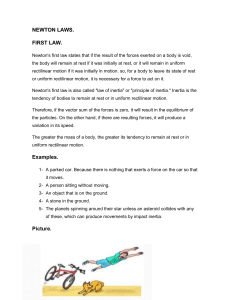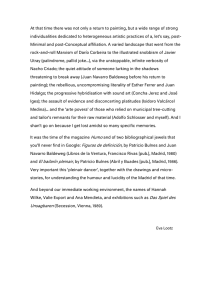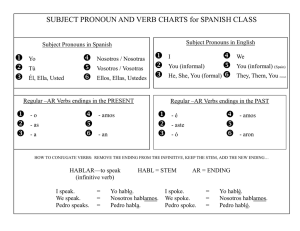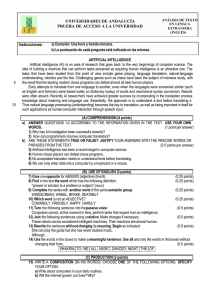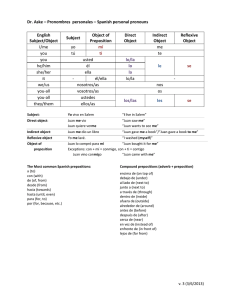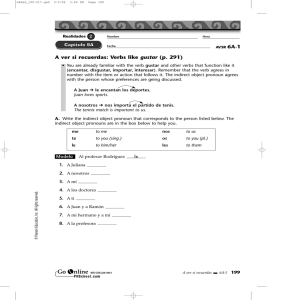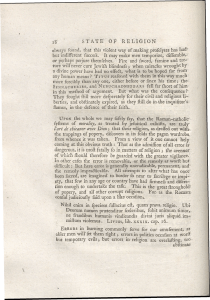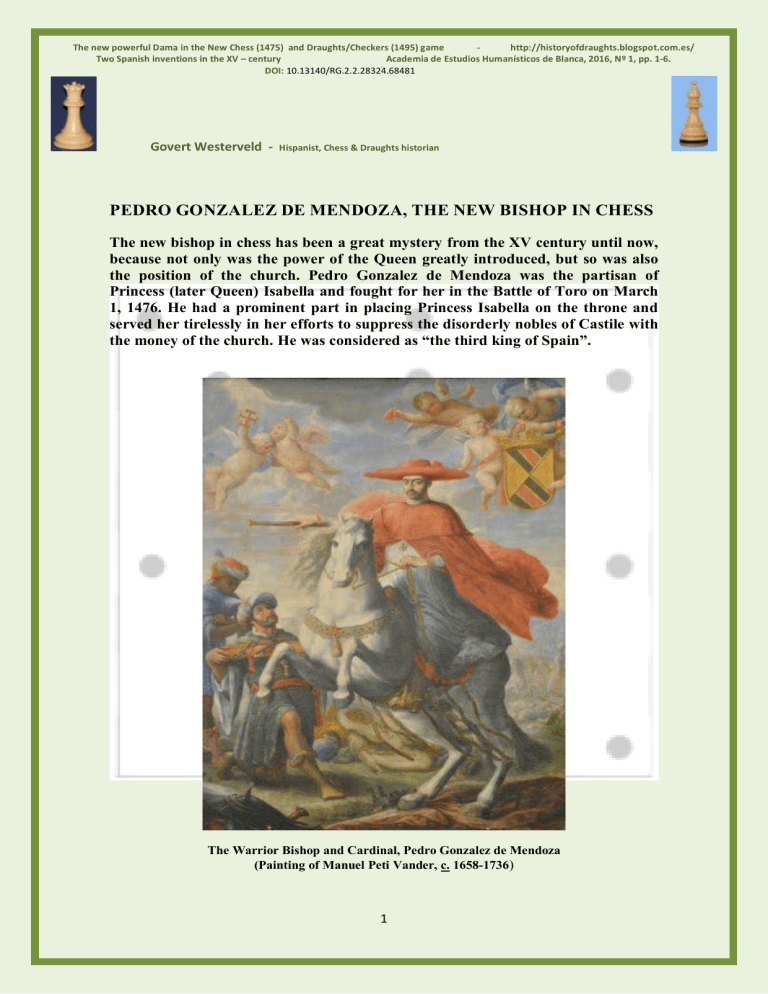
The new powerful Dama in the New Chess (1475) and Draughts/Checkers (1495) game http://historyofdraughts.blogspot.com.es/ Two Spanish inventions in the XV – century Academia de Estudios Humanísticos de Blanca, 2016, Nº 1, pp. 1-6. DOI: 10.13140/RG.2.2.28324.68481 Govert Westerveld - Hispanist, Chess & Draughts historian PEDRO GONZALEZ DE MENDOZA, THE NEW BISHOP IN CHESS The new bishop in chess has been a great mystery from the XV century until now, because not only was the power of the Queen greatly introduced, but so was also the position of the church. Pedro Gonzalez de Mendoza was the partisan of Princess (later Queen) Isabella and fought for her in the Battle of Toro on March 1, 1476. He had a prominent part in placing Princess Isabella on the throne and served her tirelessly in her efforts to suppress the disorderly nobles of Castile with the money of the church. He was considered as “the third king of Spain”. The Warrior Bishop and Cardinal, Pedro Gonzalez de Mendoza (Painting of Manuel Peti Vander, c. 1658-1736) 1 The new powerful Dama in the New Chess (1475) and Draughts/Checkers (1495) game http://historyofdraughts.blogspot.com.es/ Two Spanish inventions in the XV – century Academia de Estudios Humanísticos de Blanca, 2016, Nº 1, pp. 1-6. DOI: 10.13140/RG.2.2.28324.68481 Govert Westerveld - Hispanist, Chess & Draughts historian Dr. Juan Ramírez de Lucena, father of the chess book writer Lucena and Ambassador of the Catholic monarchs Why did the power of the alfil suddenly increase so much between 1473 and 1475? For that we have to take a look at the figure of Pedro González de Mendoza (1428-1495), the patron or protector of the Ambassador and protonotary Juan Ramírez de Lucena. The protonotary on 2 January 1470 began the service of Prince Ferdinand1, the husband of Queen Isabella of Castile, and future king of the kingdom of Castile. However, Juan Ramírez de Lucena, father of the chessbook writer Lucena2, had already for some years served Prince Ferdinand and the kingdom of Aragon, probably between 1468 and 1470. The role of Dr. Juan Ramirez de Lucena, son of the landlord of taxes Juan Ramirez de Lucena and Catalina Ramirez, was to visit France in order to get the French King to recognize the rights of Isabella for the succession to the Spanish crown. This initiative came from the bishop Pedro Gonzalez de Mendoza who had personal outstanding beneficial interests in France. The protonotary and Ambassador Dr. Juan Ramírez de Lucena was also in England and Burgundy. Thanks to the efforts of this Ambassador in various countries Isabella of Castile was stated in the different clauses of the contracts as the successor of the Castilian throne. However, the previous servant of Prince Ferdinand of the kingdom of Aragon between 1468 and 1470 now became more a servant of the kingdom of Castile and the ideas of the queen Isabella of Castile and his protector Pedro Gonzalez de Mendoza. King John II of the kingdom of Aragon, who saw his interests in France weakening due to the activities of the protonotary, considered in 1474-1476 the protonotary Juan de Lucena a servant of the Cardinal and House of Mendoza3. One unmentioned peculiarity is that under the new rules of Scachs d’amor4 not only the power of the Queen (Dama) greatly increased5, but also that of the Church. This is a very important change to consider. The Scachs d’amor6 manuscript was written in the 1 WESTERVELD, Govert (2015). The Ambassador Juan Ramírez de Lucena, the father of the chessbook writer Lucena, Academia de Estudios Humanístos de Blanca, Blanca, 2015, p. 49. 2 LUCENA (1497) Repetición de amores, y Arte de ajedrez. Salamanca. 3 ZURITA, Jerónimo (1610) Anales de Aragón. Libro XIX, Cap. XXI. 4 GARZÓN ROGER, José Antonio (2004). Scachs d’amor: la prueba definitiva del orgen valenciano del ajedrez moderno. In: “La reina Isabel la Católica, su reflejo en la dama poderosa de Valencia, cuna de ajedrez moderno y origen del juego de damas”. Valencia, Generalidad Valenciana, Secretaria Automòmica de Cultura, pp. 279-311. 5 WESTERVELD, Govert (1997). The influence of the Queen Isabel I of Castile on the new powerful dama in the origin of the draughts and modern chess game, Beniel. WESTERVELD, Govert (1994). Historia de la nueva dama poderosa en el juego de Ajedrez y Damas (History of the new powerful Queen in the game of chess and draughts). In: Homo Ludens: Der spielende Mensch IV, Salzburg, pp. 103-125. 6 Is the name of a poem written by Francesc de Castellví, Bernat Fenollar, and Narcís de Vinyoles, published in Valencia, Spain towards the end of the 15th century. 2 The new powerful Dama in the New Chess (1475) and Draughts/Checkers (1495) game http://historyofdraughts.blogspot.com.es/ Two Spanish inventions in the XV – century Academia de Estudios Humanísticos de Blanca, 2016, Nº 1, pp. 1-6. DOI: 10.13140/RG.2.2.28324.68481 Govert Westerveld - Hispanist, Chess & Draughts historian Valencian language and probably took certain terms from the work Triste deleytación, written in Castilian and Catalan, being the precursor of La Celestina. The bishop’s move (that was also new in chess) was not emphasized in the poem of Scach d’amor. One can presume that the current move of the bishop had been acquired prior to the queen, but there is no document proving such an event. Since the chess game in that period was nothing else than a reflection of real life in Spain, one cannot believe in the existence of a new bishop in chess before 1473. Isabella I of Castile Gerard David (c. 1450/1460–1523) 3 The new powerful Dama in the New Chess (1475) and Draughts/Checkers (1495) game http://historyofdraughts.blogspot.com.es/ Two Spanish inventions in the XV – century Academia de Estudios Humanísticos de Blanca, 2016, Nº 1, pp. 1-6. DOI: 10.13140/RG.2.2.28324.68481 Govert Westerveld - Hispanist, Chess & Draughts historian Prince Ferdinand was a devote chess player and Dr. Juan Ramírez de Lucena should also have been a good chess player. At that time most courtiers had to know chess and most ecclesiastical figures knew how to play chess. So Dr. Juan Ramírez de Lucena had the possibility to change the chess rules in Valencia at any time thanks to his knowledge of the chess games abroad and his influence in the Aragonian and Castilian courts. It is clear that Dr. Juan Ramírez de Lucena knew Ferdinand II of Aragon very well and was working in his courts. Before the date of Scach d’amor (1475) Ramírez Lucena was in Italy, France, and England and had time to acquire foreign chess books and to play chess in these countries where different rules applied. On the other hand we should not forget that his father was working with Juan I of Castile and therefore Juan Ramírez de Lucena could have had an important role in the marriage of Isabella I of Castile to Ferdinand II of Aragon. In this respect we should bear in mind that Isabel and Ferdinand as second cousins stood within the prohibited degrees of consanguinity, but the Archbishop of Toledo produced a papal bull affording the necessary dispensation and had the help of Alonso de Palencia7. This bore the signature of Pius II who had died in 1464 and authorized Ferdinand to marry within the third degree of consanguinity, on the expiration of our years from the date of the papal bull. Its authenticity granted, the marriage was perfectly legal, but it is almost certain that the document was an elaborate forgery constructed by John II of Aragon and the Archbishop to meet their pressing needs8. Dr. Juan Ramírez de Lucena was probably involved in the falsification of this document, since he was on the papal court of Pius II between 1460-1464 as scriptor. The warrior churchman Pedro Gonzalez de Mendoza The warrior churchman9 Pedro Gonzalez de Mendoza was the partisan of Princess Isabella, later Queen, and fought for her in the Battle of Toro on March 1, 1476. He had a prominent part in placing Princess Isabella on the throne and served her tirelessly in her efforts to suppress the disorderly nobles of Castile with money of the church. Pedro Gonzalez de Mendoza was more soldier and statesman than priest. This bishop and cardinal, apart from his personal contribution, arranged obtaining certain material loans from a great number of churches for the cause of the Castilian kings. In the battle we 7 GARCÍA LOZANO, Emilio (2005). El cronista Alfonso de Palencia y su relación con Isabel I de Castilla. In: Revista de estudios colombinos, Nº 1, pp. 103-116. 8 PLUNKET, Ierne L. (1919) Isabel of Castile and the Making of the Spanish Nation 1451-1504 London, pp. 78-79. 9 ANDREW VILLALON, L.J. (2015). “Cardinal Sins” and “Cardinal Virtues” of “El Tercer Rey”, Pedro González de Mendoza: The Many Faces of a Warrior Churchman in Late Medieval Europe. In: Journal of Medieval Military History, Volume XIII. 4 The new powerful Dama in the New Chess (1475) and Draughts/Checkers (1495) game http://historyofdraughts.blogspot.com.es/ Two Spanish inventions in the XV – century Academia de Estudios Humanísticos de Blanca, 2016, Nº 1, pp. 1-6. DOI: 10.13140/RG.2.2.28324.68481 Govert Westerveld - Hispanist, Chess & Draughts historian shall see him as Captain General of the armies of Castile. His political influence was very high and he served as counselor of the Monarchs, specialist in administration and diplomacy, and military during the civil war for the succession of Castile and the conquest of the kingdom of Granada. He was one of the last bishop soldiers. He died in Guadalajara in 1495 considered by some as “the third king of Spain” under Pedro Martyr. Why was he a protector of the protonotary Dr. Juan Ramirez de Lucena? We have to know that the father of the bishop Pedro Gonzalez de Mendoza was the Marquis of Santillana, Iñigo López de Mendoza y de la Vega (1398-1458). He was a Castilian politician and poet who held an important position in society and literature during the reign of John II of Castile. In 1412 Don Íñigo married a wealthy heiress Catarina Suárez de Figueroa. With this union he acquired great fortune and became one of the most powerful nobles of his time. His sixth son from the marriage would one day become Cardinal Mendoza. arm of Pedro Gonzalez de Mendoza De VBLPhoenix Vicente A. Barrios de la Lastra - Trabajo propio VBL-Diseño, CC BY-SA 3.0, https://commons.wikimedia.org/w/index.php?curid=18937806 The Marquis of Santillana was the godfather and protector of the landlord of taxes Juan Ramírez de Lucena who was the father of our Ambassador Dr. Juan Ramírez de Lucena. So the bishop Pedro Gonzalez de Mendoza followed the tradition of his father to protect the Lucena family. For that reason the protonotary Juan Ramirez de Lucena was more or less the servant of Pedro González de Mendoza when he travelled to France in 1470 to defend the economic interests of Mendoza. 5 The new powerful Dama in the New Chess (1475) and Draughts/Checkers (1495) game http://historyofdraughts.blogspot.com.es/ Two Spanish inventions in the XV – century Academia de Estudios Humanísticos de Blanca, 2016, Nº 1, pp. 1-6. DOI: 10.13140/RG.2.2.28324.68481 Govert Westerveld - Hispanist, Chess & Draughts historian When did the Cardinal Pedro González de Mendoza join the Queen Isabella of Castile? That was exactly in 1473, but then Mendoza’s rival Carrillo turned against her. Thanks to the influence of this cardinal the power of the church was greatly increased and now the church was next in power to the Crown. We thus understand why Pedro Martyr spoke about the third king in Spain when he was referring to Pedro González de Mendoza, and why the move of the bishop (alfil in Spanish) was greatly improved. Marquis of Santillana Gabriel Maureta y Aracil (1832–1912) In which year was the new bishop introduced to the chessboard? That is still impossible to say as there are no documenting proofs, but it could be after 1473 and before 1476, since we know that the new move of the bishop was used in the poem Scach d’amor written in ca 1475. The short diagonal move of the bishop suddenly became a long one (just as the dame in the Spanish draughts game in 1495), too. 6

